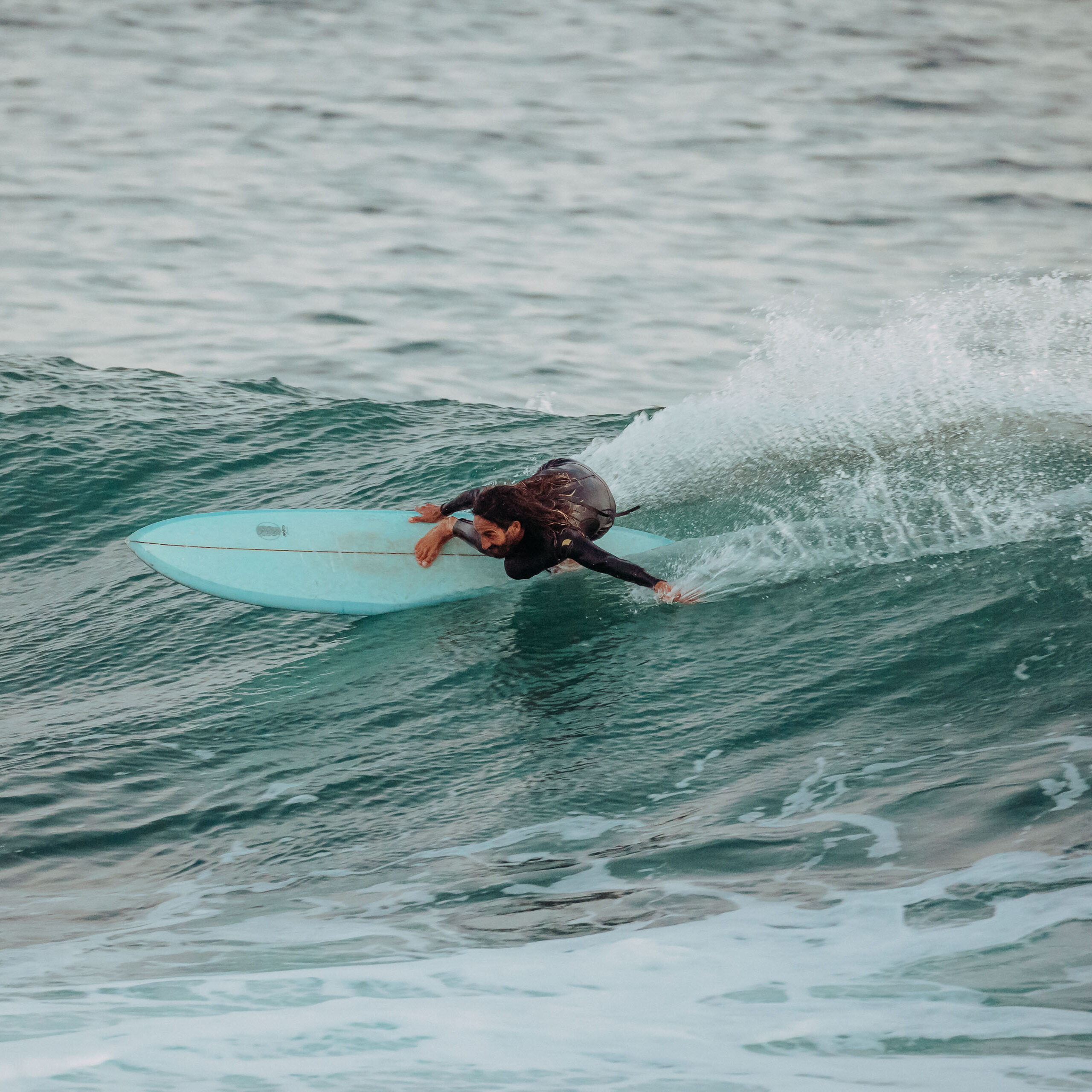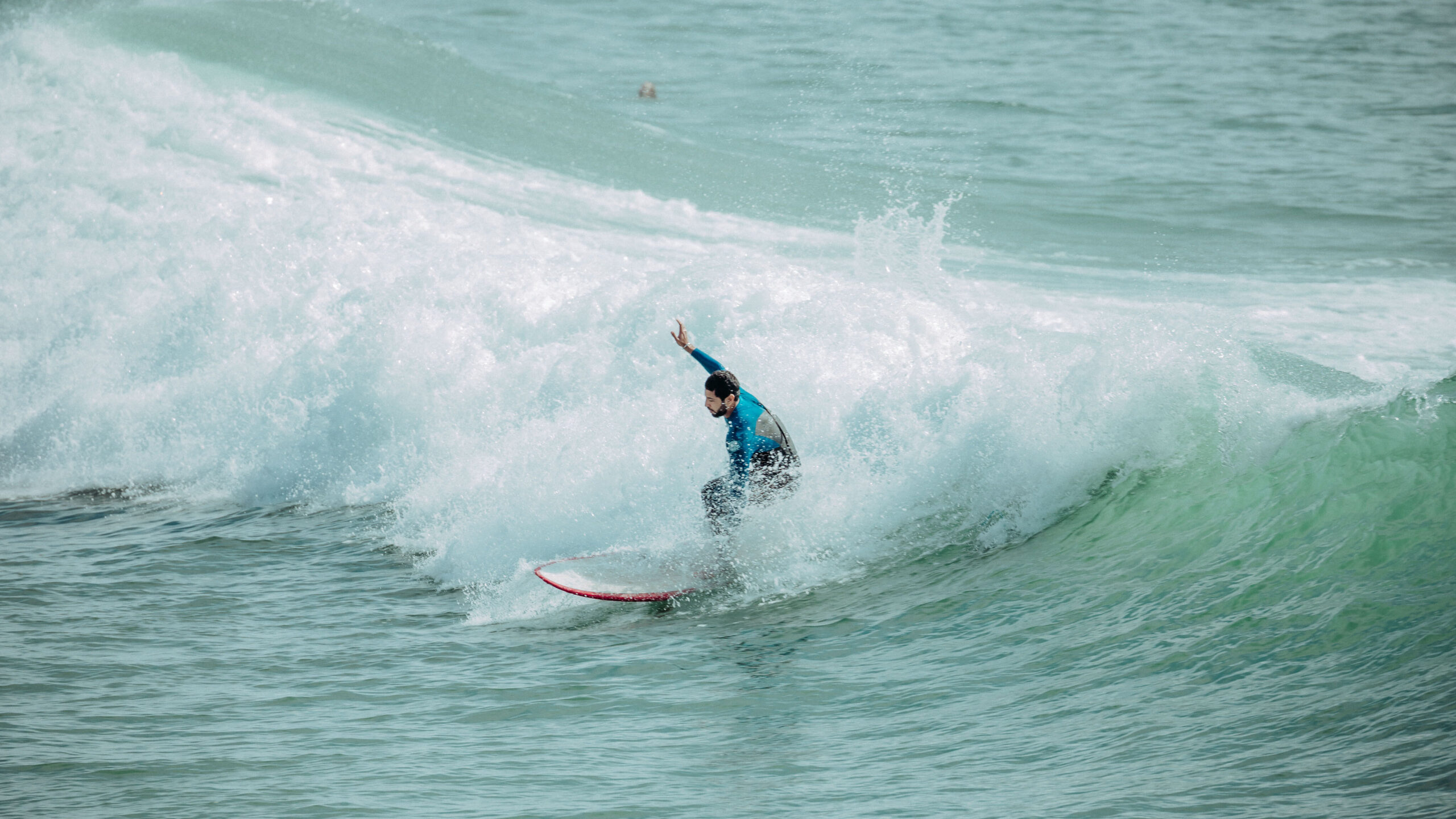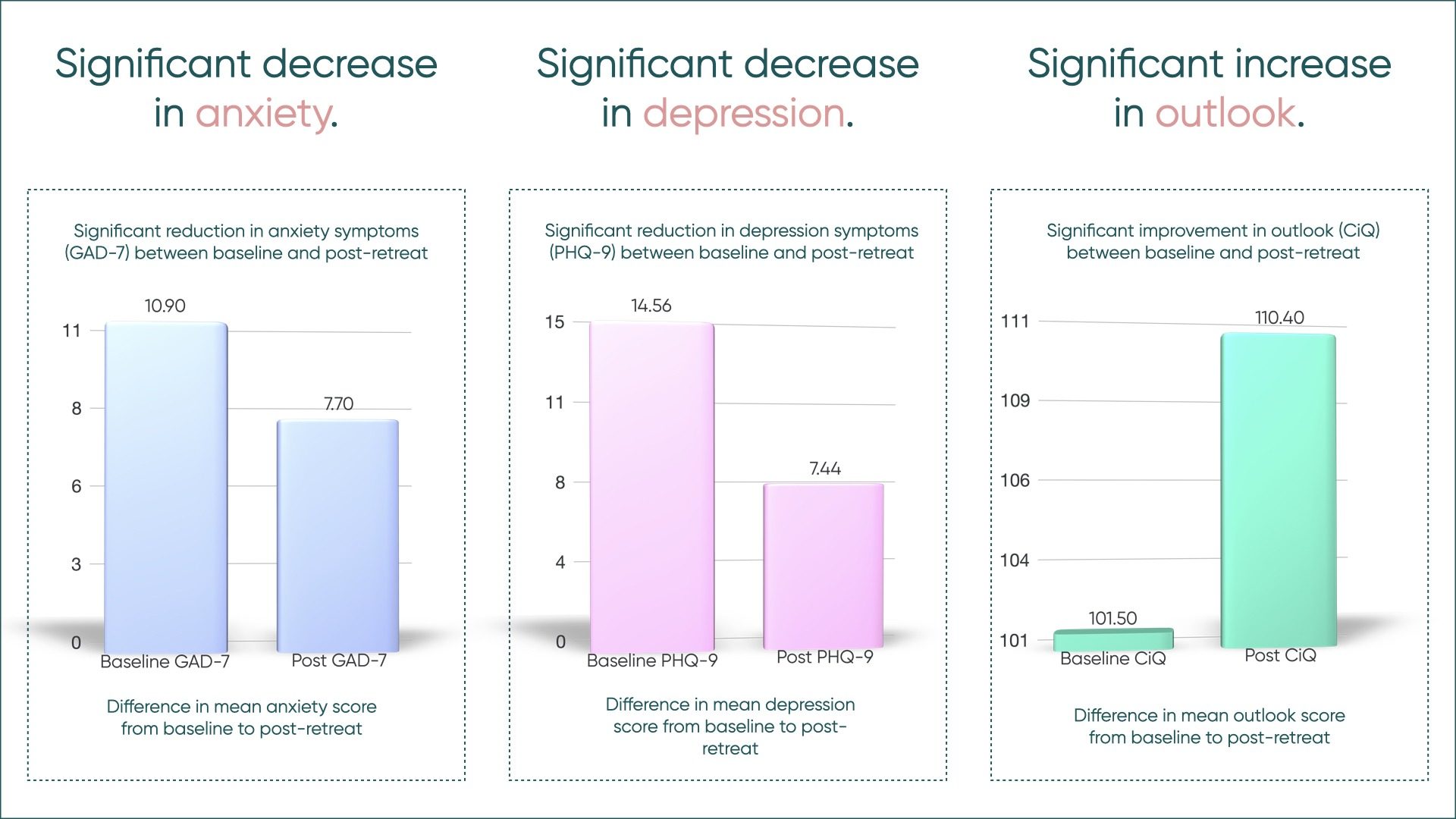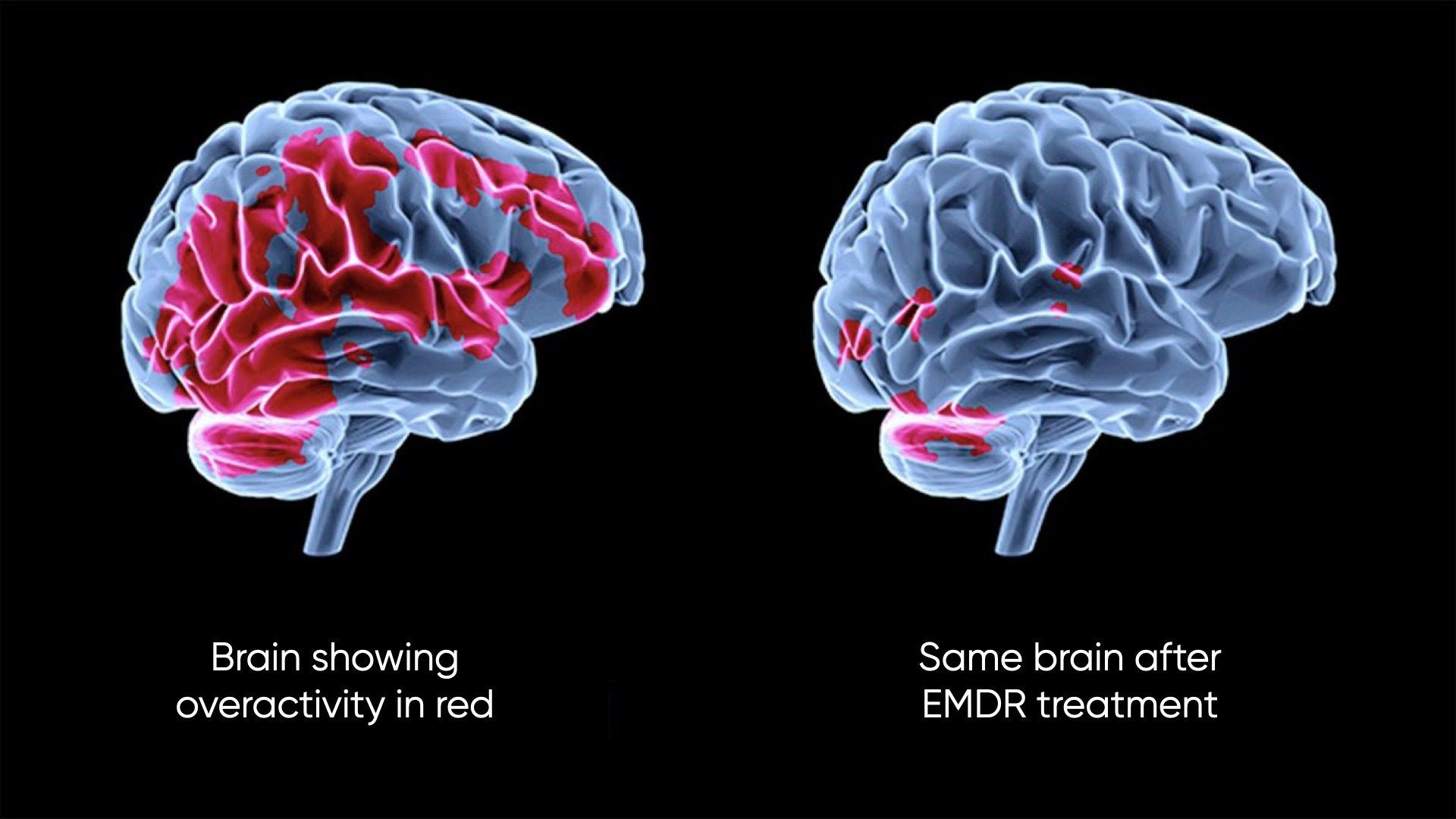A Study on Anxiety, Depression and Change in Outlook.

Morocco Report February 2018/19 Initial Findings:
Our key research question was to investigate whether there were significant differences in anxiety, depression and changes in outlook following trauma between pre-retreat and post-retreat.
The therapeutic effects of surfing are becoming increasingly evident in psychological research. Recent studies have started to document how surfing can lead to improvements in post-traumatic stress disorder, anxiety and depression (ref. 1).
There are various reasons why surfing might have such a positive impact on mental health. The most obvious being participating in physical activity, but other important factors might be engaging in a group activity and experiencing flow states.
Flow is the optimal state of total absorption in the current task you are doing; be it running, surfing or playing an instrument. Everything else disappears and you are completely in the zone (ref. 2). Resurface therapy retreats are based on integrating flow through surfing into trauma treatment, as well as encouraging interoception and engaging in experiential group therapy.
Evidence-based practice is fundamental to our ethos at Resurface, therefore we recruited an independent researcher to carry out an analysis of a recent retreat in Morocco. This intervention study was conducted to investigate whether taking part in a Resurface retreat is associated with improvements in mental health.
Details of the study
In this study we measured anxiety, depression and change in outlook following trauma at baseline (pre-retreat) and post-retreat.
Baseline scores were taken on the first day before treatment began, and post-retreat scores were taken on the last day before departure.
Ten participants took part with an average age of 41 (range: 22-56 years). The retreat consisted of 5 treatment days with one day off in the middle.
The daily itinerary was based on The Resurface Method, following the five step process: Interoception, Psycho-education, flow activity, group therapy, memory consolidation and relaxation.
-
Significant reduction in anxiety
Anxiety was measured using the standardised Generalised Anxiety Disorder (GAD-7) questionnaire, which is highly reliable and commonly used in NHS practice in the UK3.
A paired sampled t test showed a statistically significant improvement in anxiety from baseline to post-retreat (p=.038), whereby the mean score was reduced from 10.9 (SD= 3.5) before treatment to 7.7 (SD= 4.6) post treatment (see Figure 1).
Figure 1: Bar chart indicating significant reduction in anxiety score on the GAD-7 from baseline (M=10.9, SD= 3.5) to post-retreat (M= 7.7, SD= 4.6), p=.038.
-
Significant reduction in depression
Depression was measured using the PHQ-9, a standardised measure commonly used in clinical practise alongside the GAD-7.
Here, a significant reduction was also found in mean depression score (p=.001). The average score before the retreat was 14.56 (SD= 5.4), and this dropped to 7.44 (SD= 5.7) following the retreat (see Figure 2). According to the PHQ-9 guidelines (ref 4), this depression score lowered from the high end of the moderately severe depression category to the lower end of moderate depression category.
Figure 2: Bar chart indicating significant reduction in score on the PHQ-9 from baseline (M= 14.56, SD= 5.4) to post-retreat (M= 7.44, SD= 5.4), p= .001.
-
Significant improvement in outlook following trauma
The Change in Outlook Questionnaire (CiOQ) is a common measure in post-traumatic growth research (ref 5). This questionnaire measures positive and negative change in outlook following trauma, where a higher score indicates higher positive change. An increased score over time is suggested to be reflective of post-traumatic growth.
The analysis showed a statistically significant increase in change in outlook score (p=.046), indicating significant post-traumatic growth from baseline to post-retreat (see Figure 3). The mean scores increased from 101.5 (SD= 18.6) to 110.4 (SD= 18.9).
Figure 3: Bar chart indicating significant reduction in score on the CiOQ from baseline (M= 101.5, SD= 18.6) to post-retreat (M= 110.4, SD= 18.9), p= .046.
Main research findings:
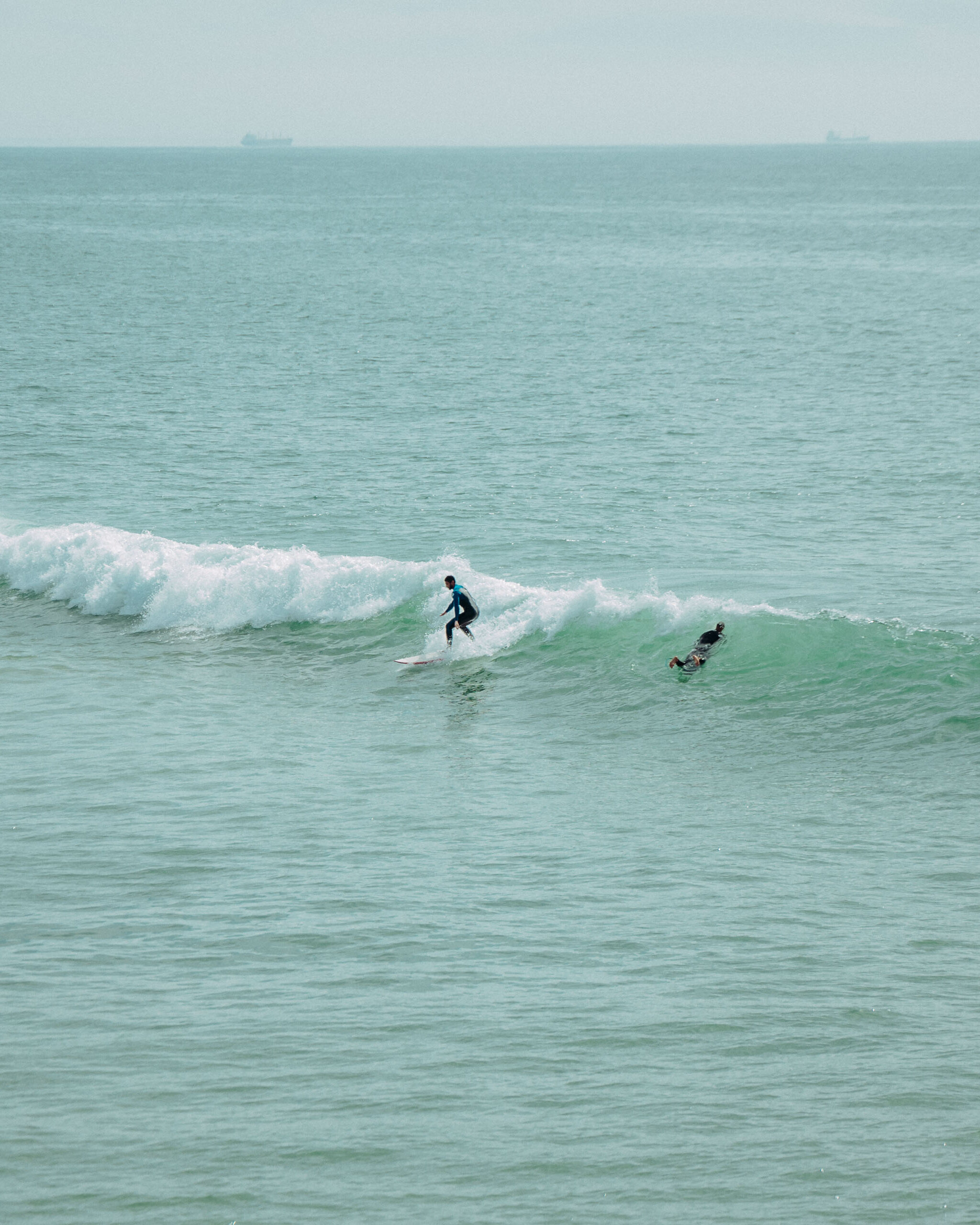
Interpreting the findings and next steps:
The research findings detailed above suggest that attending the Resurface retreat was associated with improved anxiety, depression and change in outlook following trauma. However, some caution must be taken when interpreting the findings. Firstly, the structure of the Resurface retreat only accommodates for 10 individuals in order to provide a holistic treatment programme for the participants. In terms of research, this is a very small sample and lacks statistical power, therefore strong claims cannot be made based on the findings.
Secondly, there appears to be a lot of variation in the scores in that some of the standard deviations are high. This could be dependent upon the fact that there was high variability in the causes and severity of post-traumatic stress in the participants. Given that this retreat is open to all individuals who have experienced trauma, regardless of the nature of their experience, it is not possible to control for the high level of individual differences in the research.
Finally, the post-retreat measure was taken immediately after the programme was completed, and therefore the reductions in feelings of anxiety and depression, for example, may be inflated. In order to examine this issue, participants will be contacted at 3 and 6-month follow up to assess whether the effects evidenced here were sustained over time. Another point to note is that while the measures used in this study are reliable and have been validated in previous research, there are limitations to the depth of data that can be retrieved from questionnaires. Moreover, participants may not respond as conscientiously as if the researcher had asked the questions in an interview. This will be addressed in the next study by implementing both qualitative and quantitative measures.
A Dissertation on EMDR and Post-traumatic Growth

An Interpretative Phenomenological Analysis (IPA) of the link between EMDR and post-traumatic growth
This dissertation was submitted as part requirement for the MSc degree in EMDR at the University of Worcester.
August 2019 | Word count: 15,229.
Joshua James Dickson. MSc., SMMGP, FDAP (Acc.), EMDR (acc.), EMDR Consultant, Founder and Clinical Director at Resurface.
Abstract
Up to this point, there have been few studies mentioning the link between EMDR and post- traumatic growth (PTG). One of the main discoveries of this study is that the concept of PTG is not well understood and that there is limited recognition of its quantitative measures. There was some understanding of the potential links between an EMDR process and the facilitation of PTG, yet this was little formalised or congruent in its delivery. Using Interpretative Phenomenological Analysis (IPA), this project attempted to investigate the connection in greater detail. Four EMDR Consultants were enlisted to participate. Five major themes materialised during the data analysis: EMDR is a powerful and efficacious intervention, PTG is more than just symptom relief, EMDR can have a part to play in promoting PTG, the re- evaluation phase is a key component in recognising and identifying PTG, and the need for more research is crucial for further understanding. In line with the IPA method, all of the themes are accentuated via the capture of, and analysis of, comprehensive accounts of the research participant’s lived experiences. Results showed the need for a better understanding of PTG and the necessity of further research.
